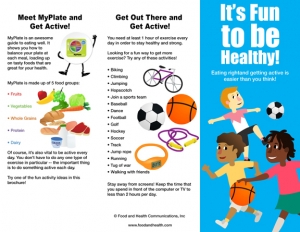Kids and the Benefits of Physical Activity
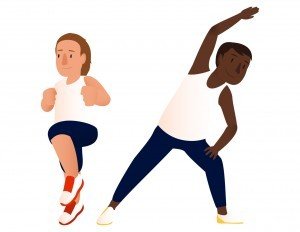 The Centers for Disease Control and Prevention (CDC), the American Heart Association (AHA), and the Physical Activity Guidelines for Americans all recommend that "Children and adolescents should do 60 minutes (1 hour) or more of physical activity each day." Most of that activity should be aerobic exercise, with some muscle-strengthening and bone-strengthening work thrown in too. But why be active every day? What are the benefits?According to the National Institutes of Health (NIH), "Like adults, kids need exercise. [...] Regular exercise helps children feel less stressed, feel better about themselves, feel more ready to learn in school, keep a healthy weight, build and keep healthy bones, muscles, and joints, [and] sleep better at night.” That's quite a few benefits, both physical and emotional. And that's just the tip of the iceberg. The CDC also offers a summary of the health benefits of exercise for kids, and it's quite a compelling list. They write, "Regular physical activity in childhood and adolescence improves strength and endurance, helps build healthy bones and muscles, helps control weight, reduces anxiety and stress, increases self-esteem, and may improve blood pressure and cholesterol levels."Of course, countless studies have been done to support these assertions, but one study stands out. The health benefits of physical activity in children and adolescents: implications for chronic disease prevention by M.S. Sothern et. al. offers a close look at the impact of exercise on kids and teens. The authors assert,
The Centers for Disease Control and Prevention (CDC), the American Heart Association (AHA), and the Physical Activity Guidelines for Americans all recommend that "Children and adolescents should do 60 minutes (1 hour) or more of physical activity each day." Most of that activity should be aerobic exercise, with some muscle-strengthening and bone-strengthening work thrown in too. But why be active every day? What are the benefits?According to the National Institutes of Health (NIH), "Like adults, kids need exercise. [...] Regular exercise helps children feel less stressed, feel better about themselves, feel more ready to learn in school, keep a healthy weight, build and keep healthy bones, muscles, and joints, [and] sleep better at night.” That's quite a few benefits, both physical and emotional. And that's just the tip of the iceberg. The CDC also offers a summary of the health benefits of exercise for kids, and it's quite a compelling list. They write, "Regular physical activity in childhood and adolescence improves strength and endurance, helps build healthy bones and muscles, helps control weight, reduces anxiety and stress, increases self-esteem, and may improve blood pressure and cholesterol levels."Of course, countless studies have been done to support these assertions, but one study stands out. The health benefits of physical activity in children and adolescents: implications for chronic disease prevention by M.S. Sothern et. al. offers a close look at the impact of exercise on kids and teens. The authors assert,
"The numerous health benefits of regular exercise […] include reduction of low density lipoproteins while increasing high density lipoprotein; improvement of glucose metabolism in patients with type II diabetes; improved strength, self esteem and body image; and reduction in the occurrence of back injuries. […] Furthermore, by decreasing sedentary behaviors and, thus, increasing daily physical activity, individuals may experience many stress-reducing benefits, which may enhance the immune system."
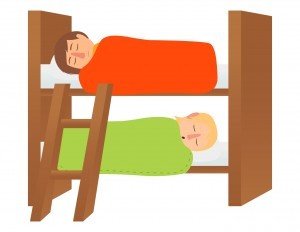 As the study above indicates, in addition to the direct benefits of physical activity, there are also reduced risk factors. Being active regularly can stave off the dangers that accompany a more sedentary lifestyle. For example, the AHA asserts "Physical inactivity is a major risk factor for developing coronary artery disease. It also increases the risk of stroke and such other major cardiovascular risk factors as obesity, high blood pressure, low HDL ('good') cholesterol and diabetes."With all these benefits, you'd think it'd be easy to get kids to be active, right? But the CDC has shared some sobering statistics.
As the study above indicates, in addition to the direct benefits of physical activity, there are also reduced risk factors. Being active regularly can stave off the dangers that accompany a more sedentary lifestyle. For example, the AHA asserts "Physical inactivity is a major risk factor for developing coronary artery disease. It also increases the risk of stroke and such other major cardiovascular risk factors as obesity, high blood pressure, low HDL ('good') cholesterol and diabetes."With all these benefits, you'd think it'd be easy to get kids to be active, right? But the CDC has shared some sobering statistics.
"In a nationally representative survey, 77% of children aged 9–13 years reported participating in free-time physical activity during the previous 7 days. In 2013, only 29% percent of high school students had participated in at least 60 minutes per day of physical activity on each of the 7 days before the survey. 15.2% percent of high school students had not participated in 60 or more minutes of any kind of physical activity on any day during the 7 days before the survey. Participation in physical activity declines as young people age."
So, how can parents and educators help kids and teens increase their physical activity levels?The AHA recommends a 3-pronged approach that involves reducing screen time, finding activities that are engaging, and setting a good example. They assert, "Physical activity should be increased by reducing sedentary time (e.g., watching television, playing computer video games or talking on the phone). Physical activity should be fun for children and adolescents. Parents should try to be role models for active lifestyles and provide children with opportunities for increased physical activity."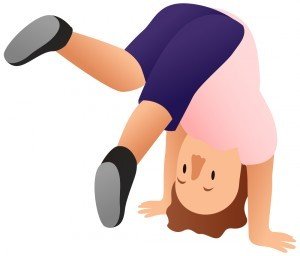 The NIH backs up those claims, then takes them further, maintaining "As kids spend more time watching TV, they spend less time running and playing. Parents should limit TV, video game and computer time. Parents can set a good example by being active themselves. Exercising together can be fun for everyone. Competitive sports can help kids stay fit. Walking or biking to school, dancing, bowling and yoga are some other ways for kids to get exercise."There are lots of ways to help children be more active, and every child is different. Try different approaches until you find one that works for each kid. And remember, the benefits are substantial.References:
The NIH backs up those claims, then takes them further, maintaining "As kids spend more time watching TV, they spend less time running and playing. Parents should limit TV, video game and computer time. Parents can set a good example by being active themselves. Exercising together can be fun for everyone. Competitive sports can help kids stay fit. Walking or biking to school, dancing, bowling and yoga are some other ways for kids to get exercise."There are lots of ways to help children be more active, and every child is different. Try different approaches until you find one that works for each kid. And remember, the benefits are substantial.References:
- 2008 Physical Activity Guidelines for Americans Summary (Office of Disease Prevention and Health Promotion)
- Exercise for Children (NIH)
- How Much Physical Activity Do Children Need? (CDC)
- Physical Activity Facts (CDC)
- The AHA’s Recommendations for Physical Activity in Children (AHA)
- The Health Benefits of Physical Activity in Children and Adolescents: Implications for Chronic Disease Prevention (U.S. National Library of Medicine)
And here's a brand-new PDF handout, just for you! Today's handout features the highlights from this post -- how will you use it?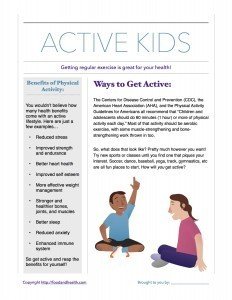 Of course, there's always more in the Nutrition Education Store. Check out these great physical activity resources...
Of course, there's always more in the Nutrition Education Store. Check out these great physical activity resources...
